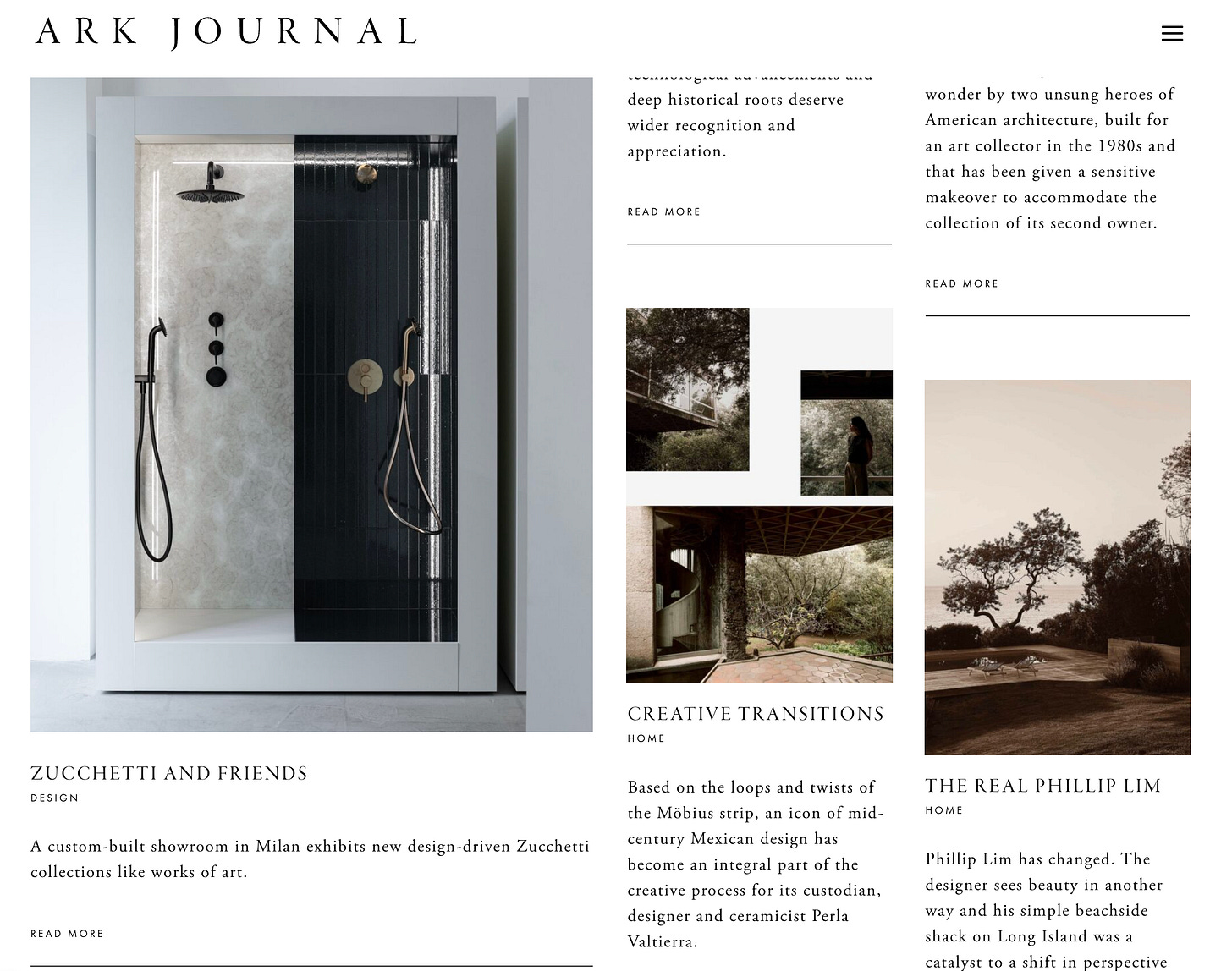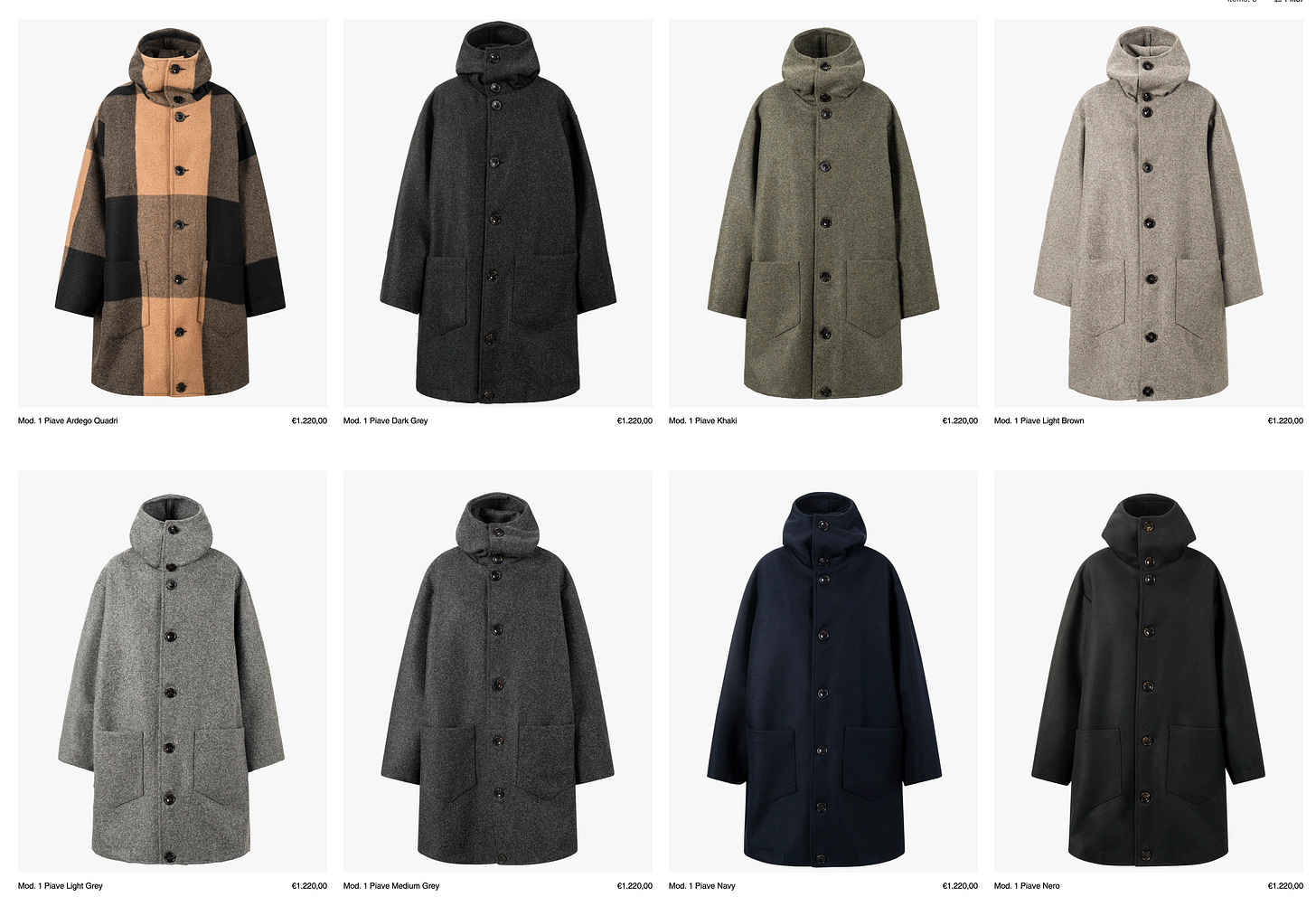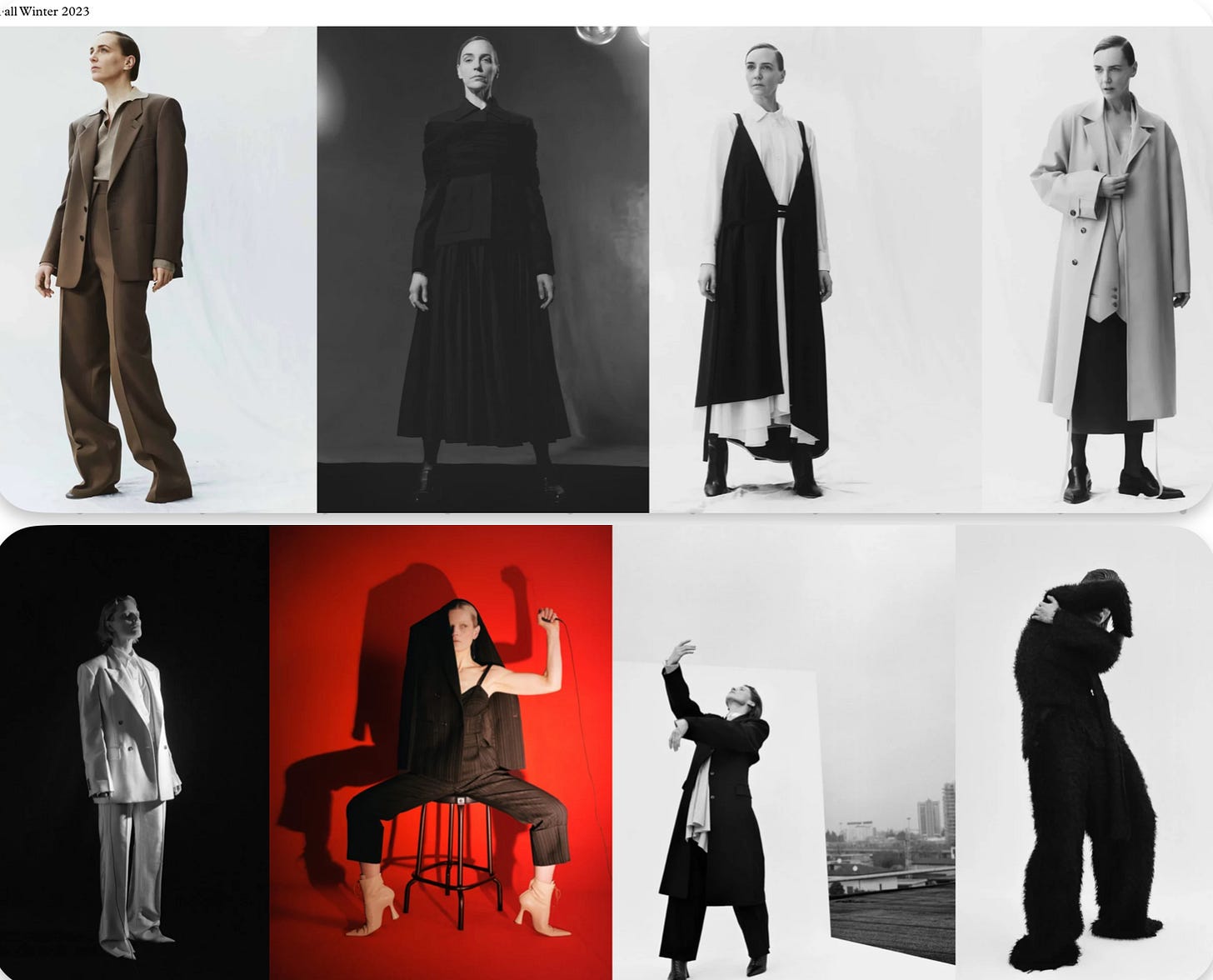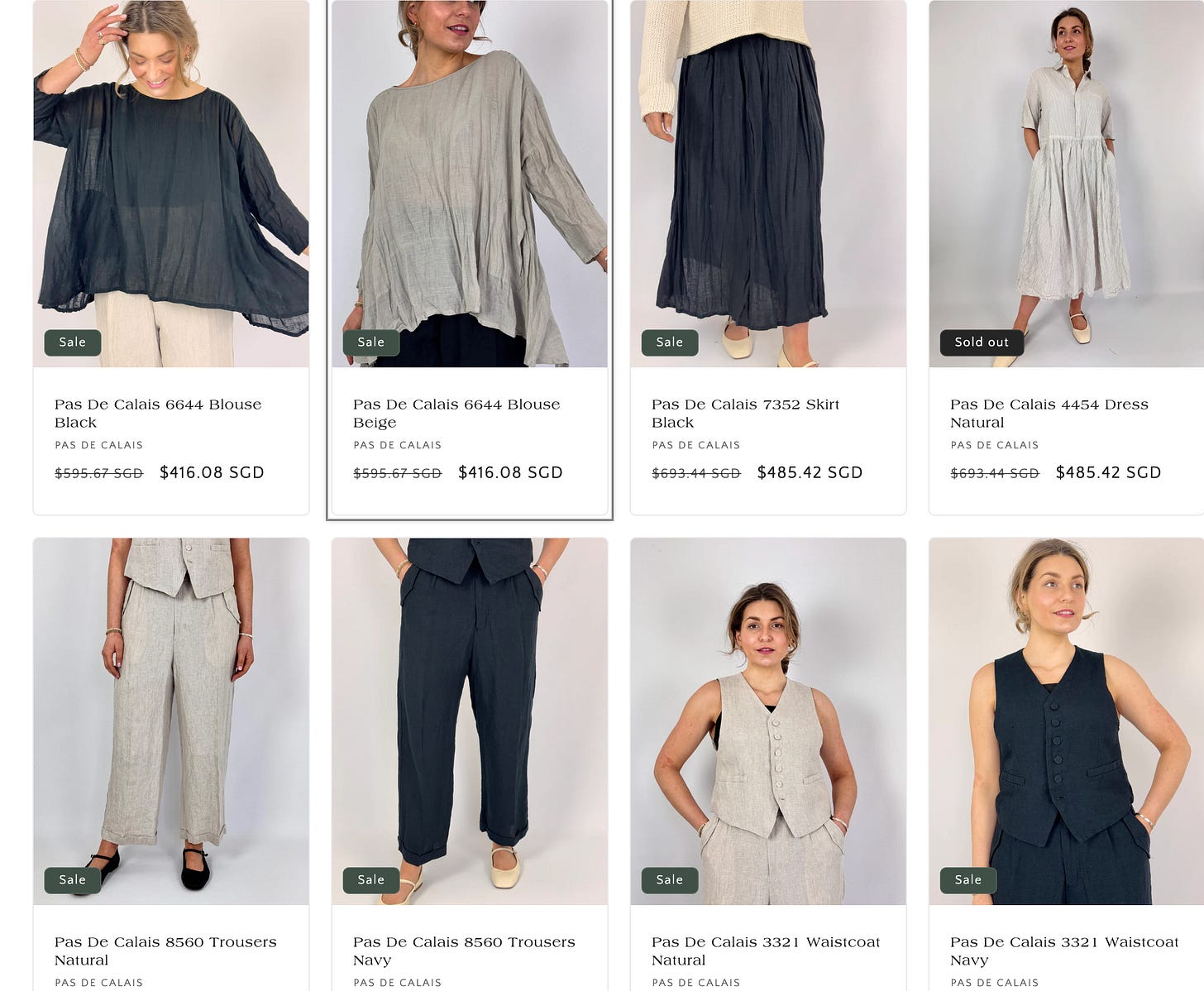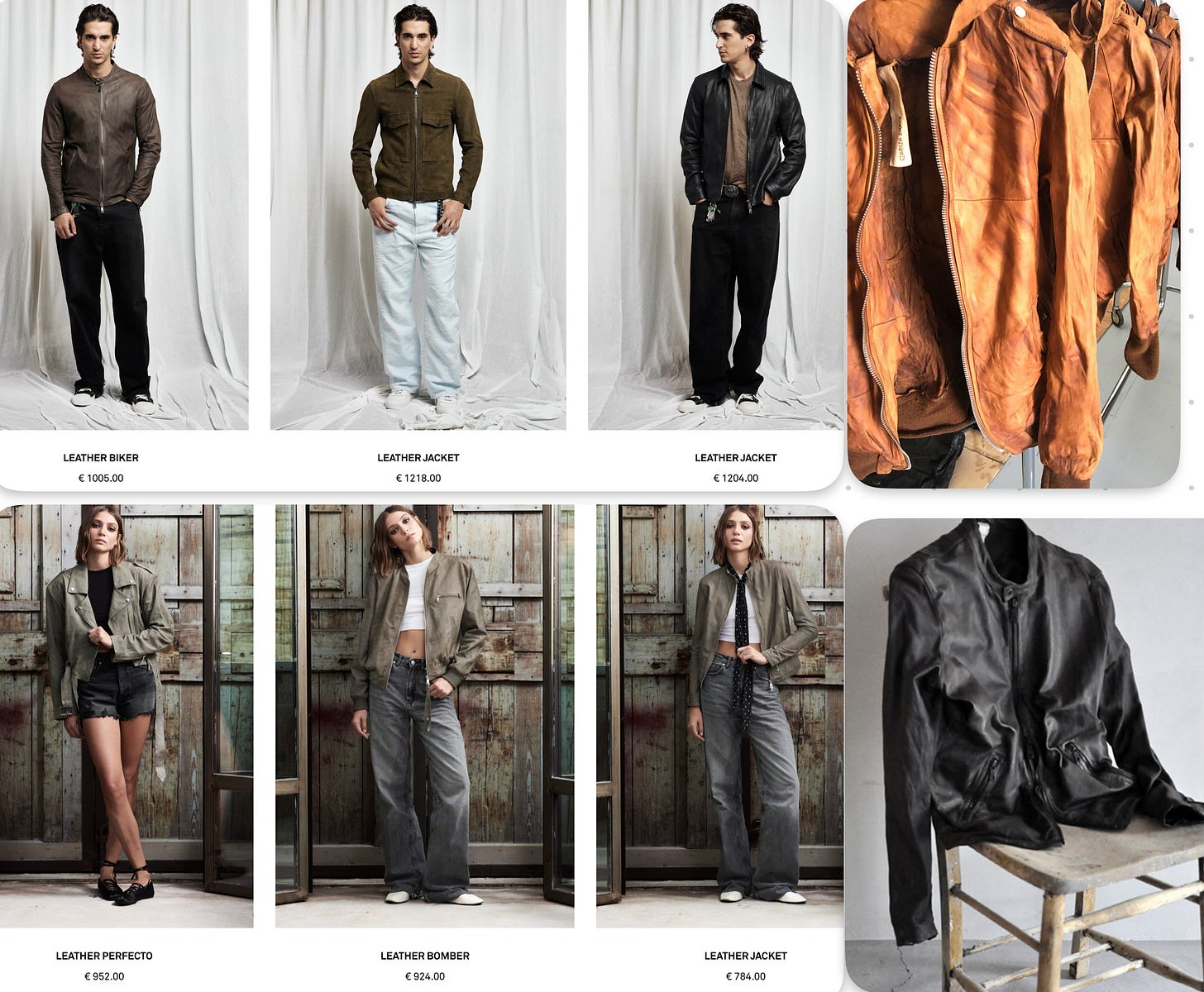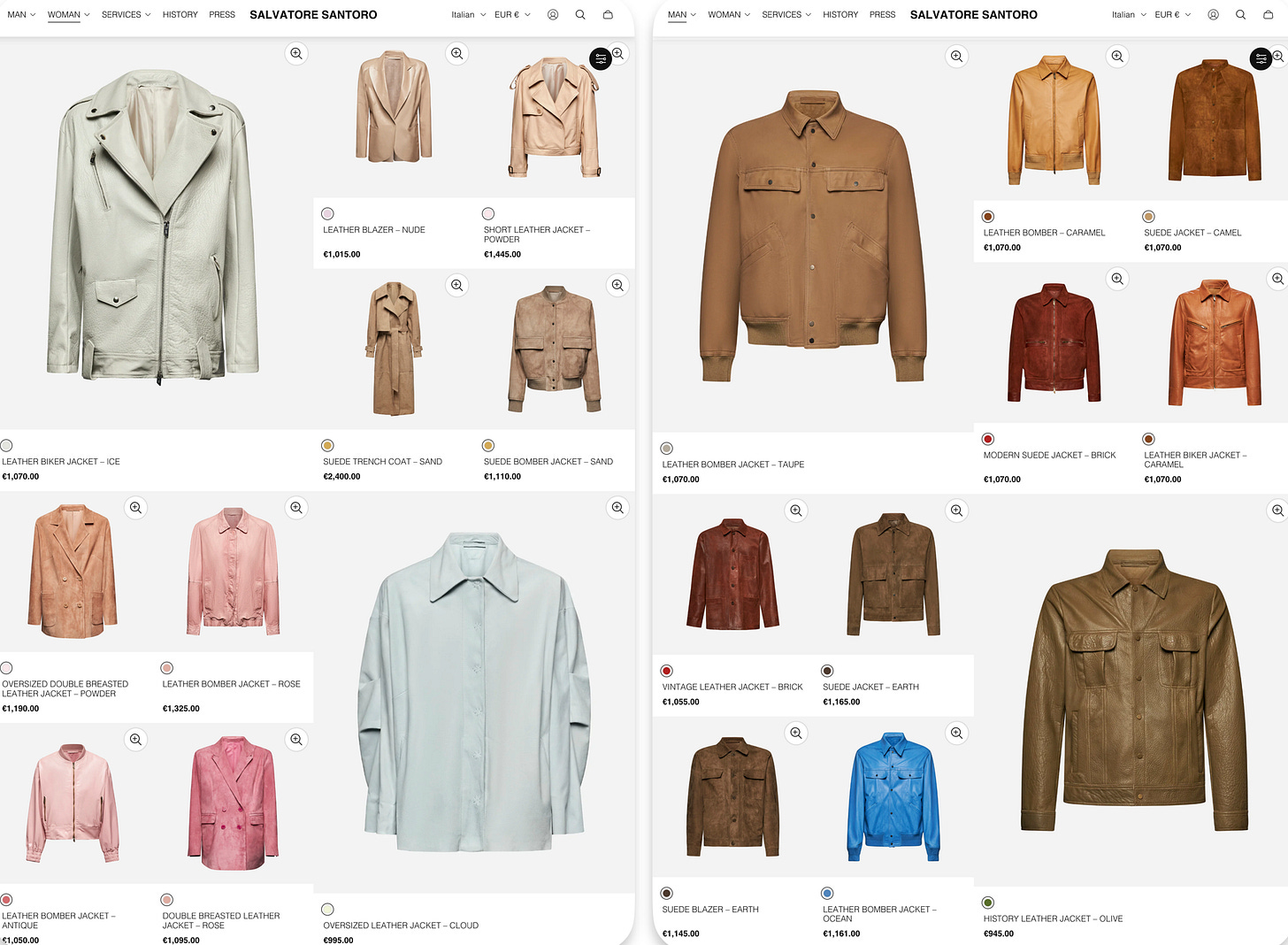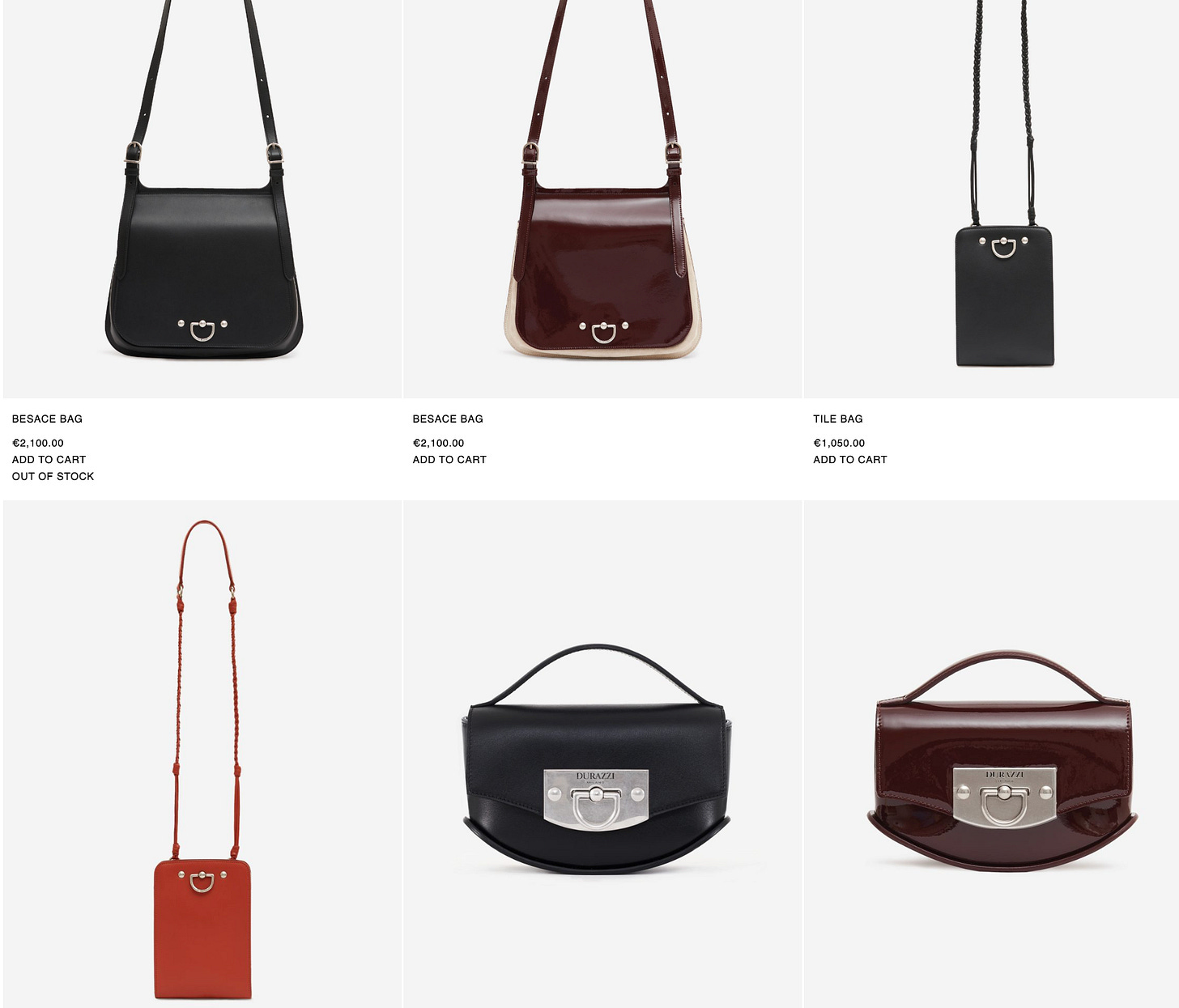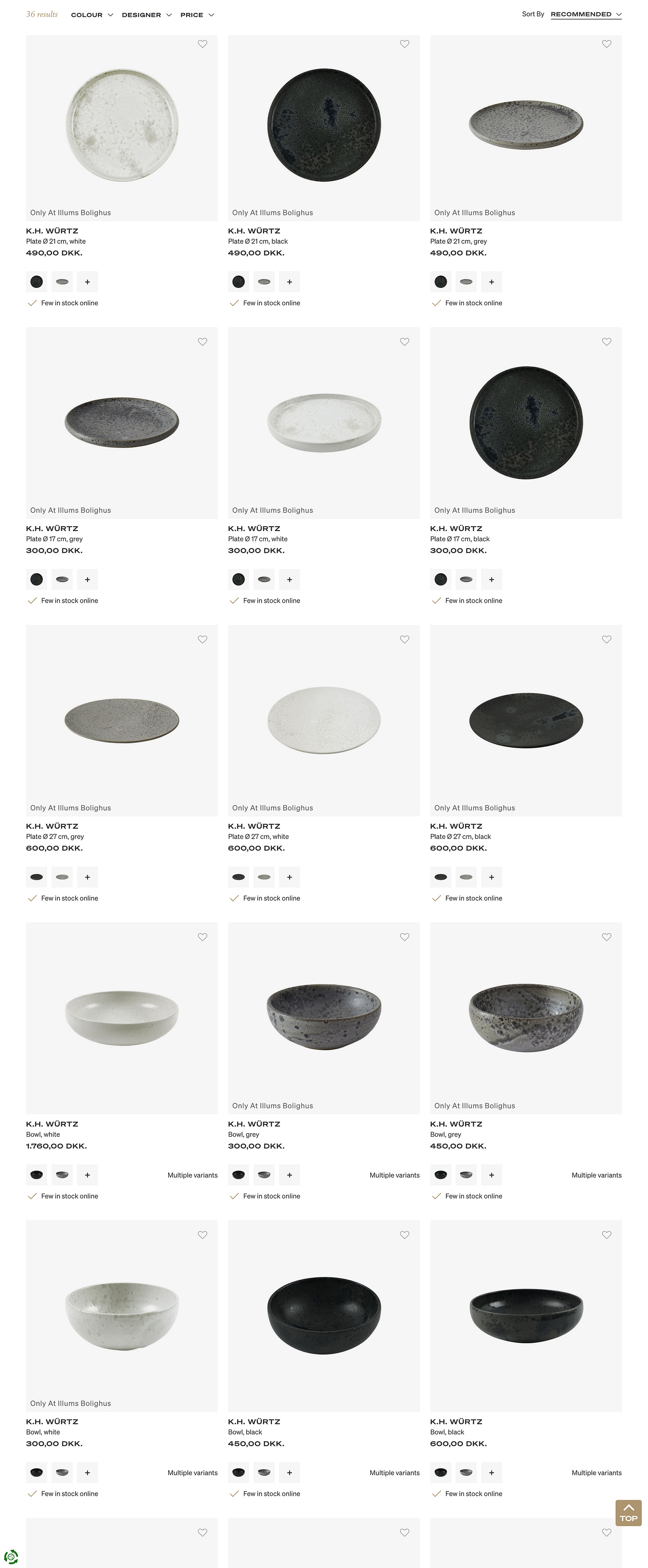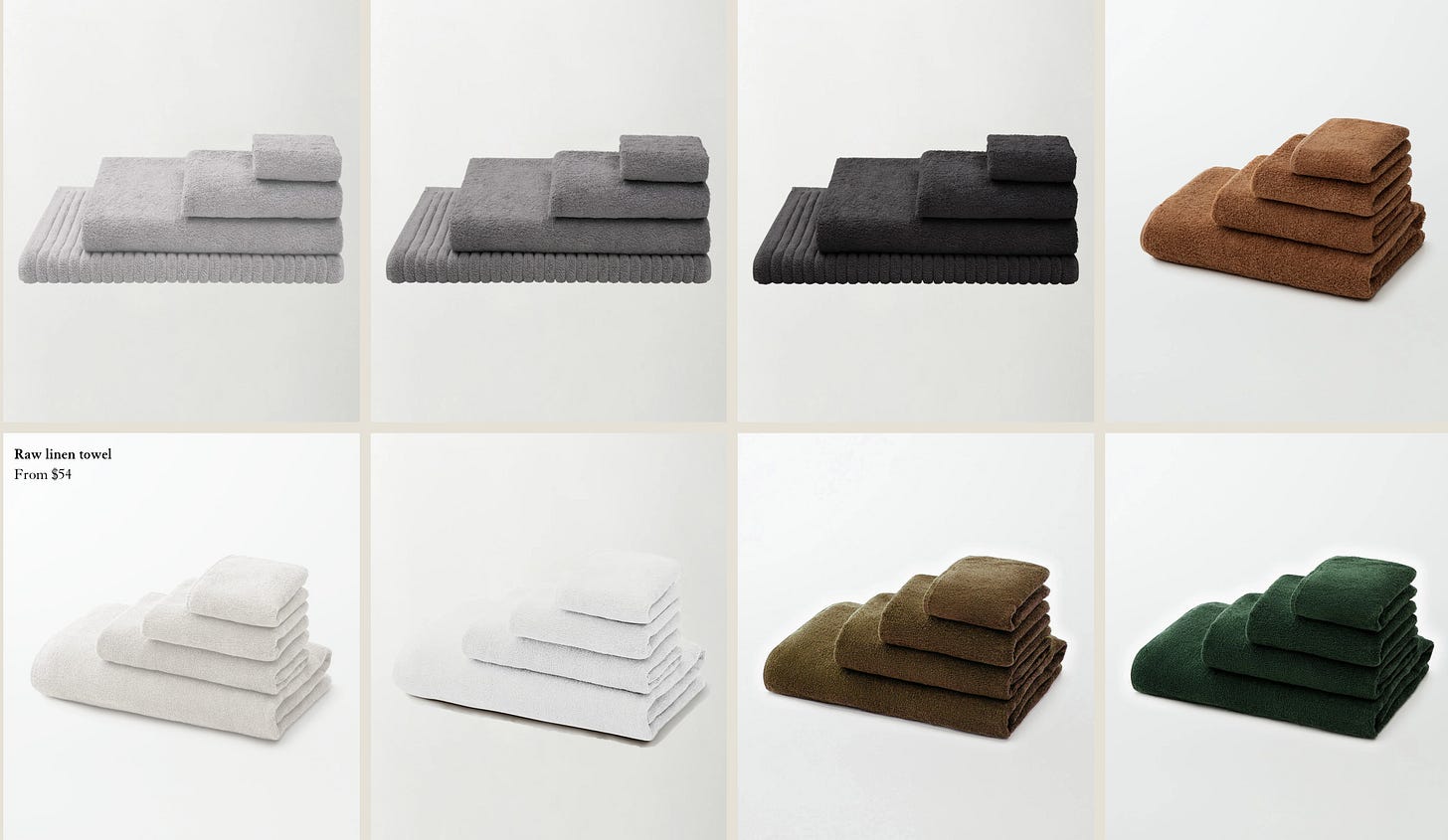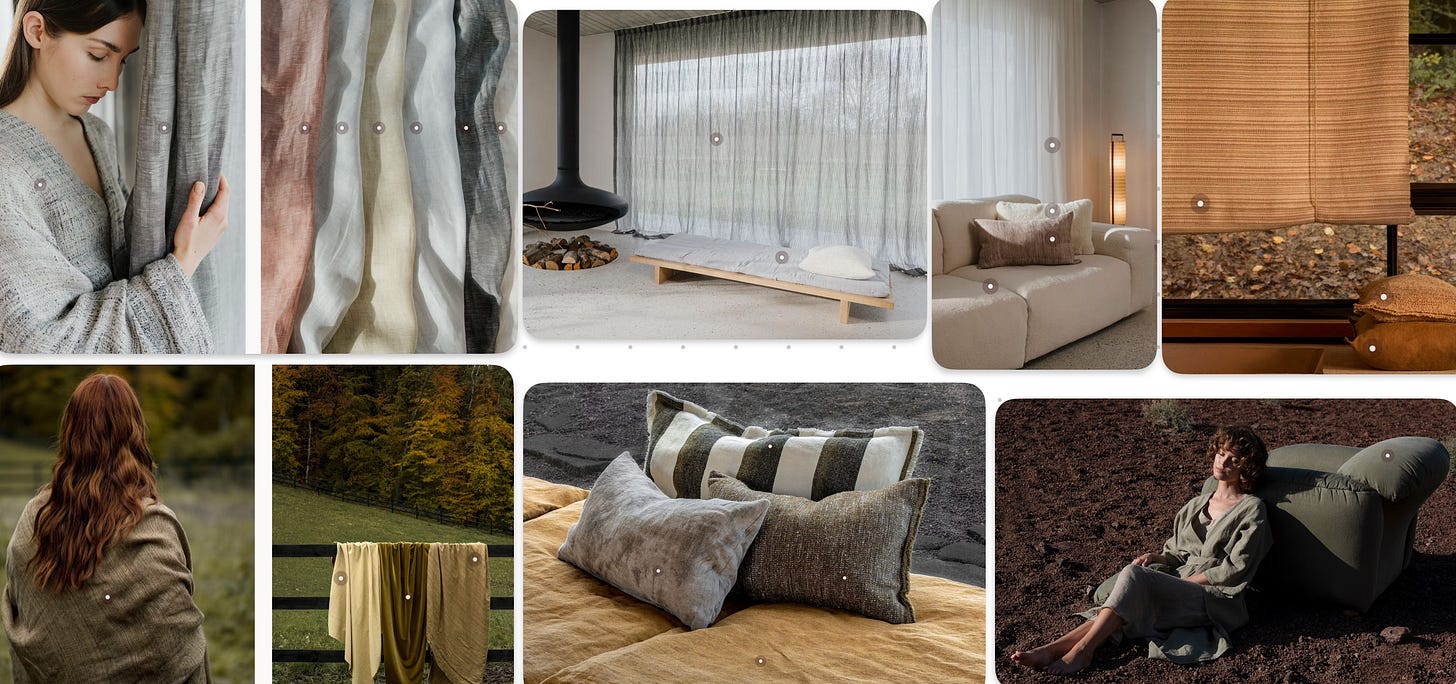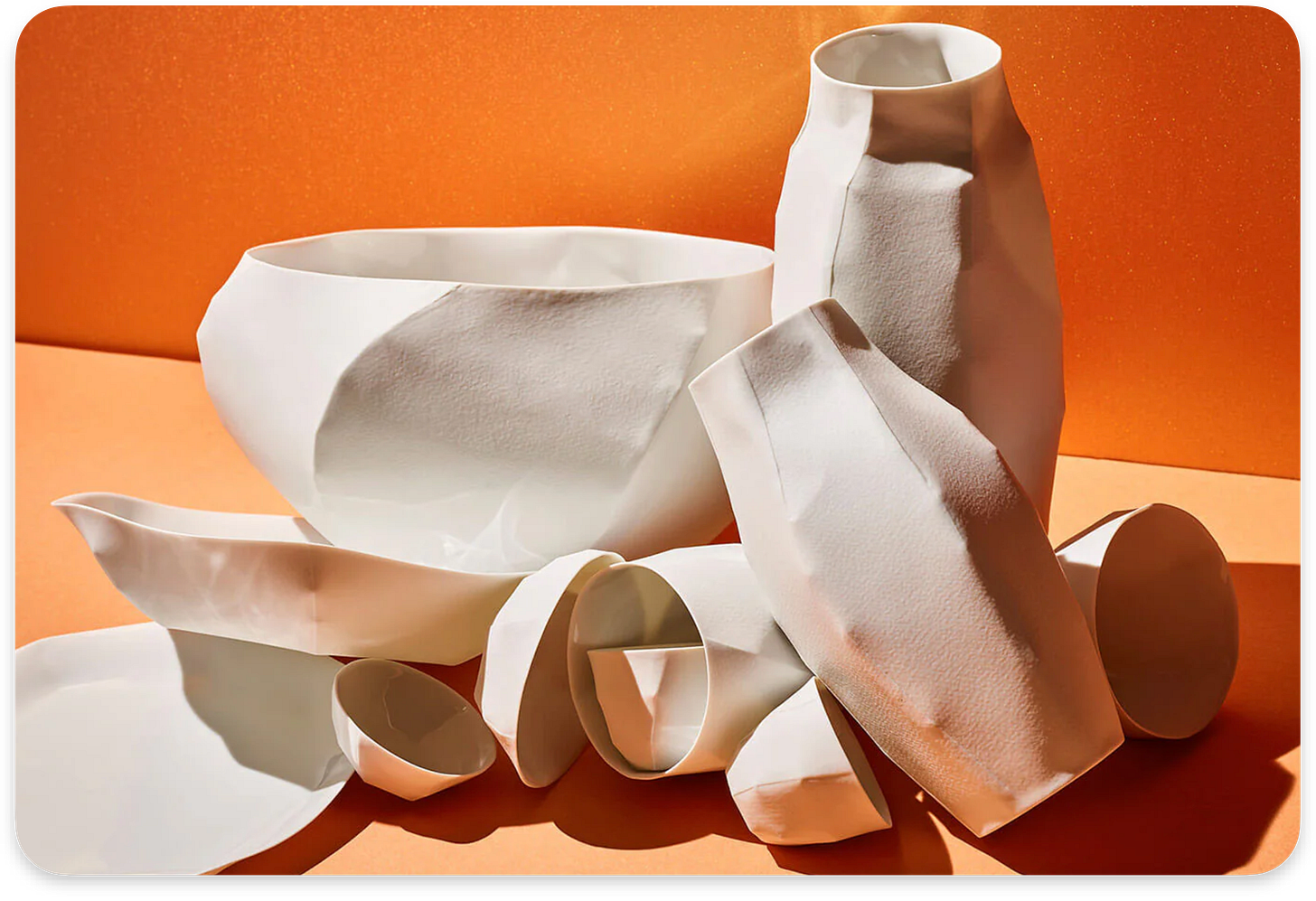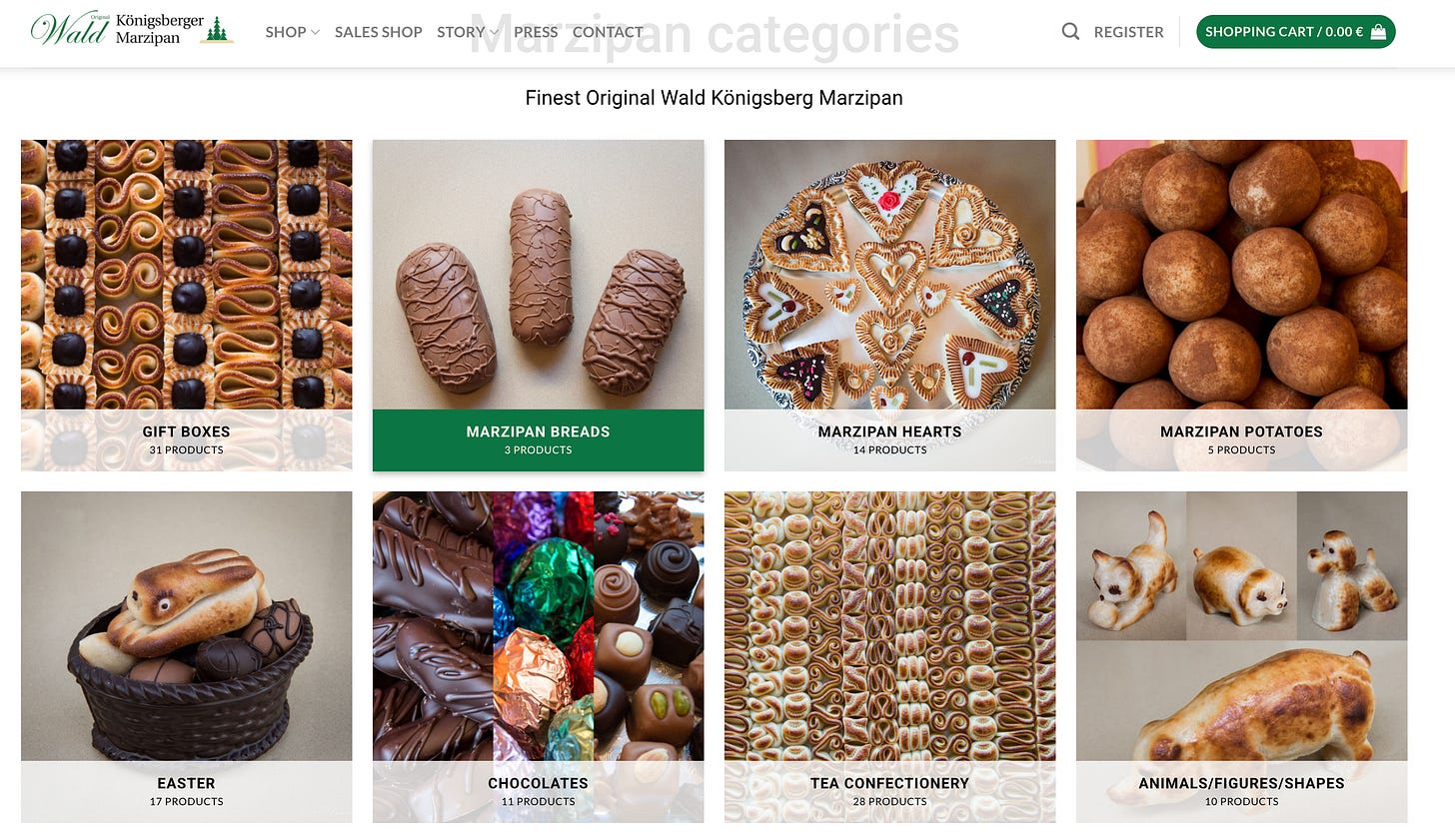Andreas Murkudis : Berlin’s iconic minimalist boutique ,my picks from 200 brands and 11 German labels worth visiting
Andreas Murkudis in Berlin was the first truly noteworthy concept store I discovered. I realized that concept stores could operate in such a sophisticated manner—maintaining their own official website like clothing brands, writing detailed introductions for each curated brand like magazines, and even personally handling the photography for many brand garments.
Their selected brands encompass not only European labels but also numerous highly niche Japanese fashion and handicraft brands, occasionally featuring Iranian, Indian, and Tibetan Chinese brands, though American brands are notably absent despite their abundance. The overall aesthetic is dominated by minimalist style. Beyond apparel, the store brings together diverse categories including home goods, handicrafts, and avant-garde magazines.
In describing certain niche brands, Andreas Murkudis personally recounts his initial encounters with them: serendipitous discoveries on Instagram, delightful meetings at fashion exhibitions, chance encounters with storefronts during street wanderings, attraction to exquisite tableware during meals, enthusiastic recommendations from friends, or unexpected finds through fashion collaborations. Whenever he is personally moved by a brand, he proactively contacts these clothing and handicraft founders, ultimately gathering them in two Berlin locations on Potsdamer Strasse: stores at numbers 81 and 77.
Store 81 is larger with more diverse categories, as demonstrated in the image below. Store 77 focuses more on home goods, handicrafts, and art exhibitions, with relatively shorter operating hours. The entire Andreas Murkudis concept store spans 1,000 square meters in a building that previously housed the printing facility of Tagesspiegel newspaper.
Andreas Murkudis not only favors avant-garde fashion selections but also deliberately seeks niche locations with unique atmospheric qualities.
The magazines offered in-store similarly lean toward niche literary publications, maintaining a quiet aesthetic with distinctive personal taste. For instance, the store displays "ark journal," a Scandinavian magazine from Copenhagen that combines in-depth reporting on local events with carefully selected items of high aesthetic value, while maintaining excellent photographic standards.
Some magazines and photography collections are items Andreas Murkudis has been collecting since the 1980s, now offered for sale.
I spent an entire day cataloguing all two hundred brands. Niche brands worthy of individual introduction will be featured in dedicated articles, with a complete brand list attached at the end.
This article primarily organizes representative brands that exemplify Andreas Murkudis concept store's curatorial aesthetic style:
01 Among the international fashion brands curated by Andreas Murkudis, Japanese and Italian brands are most numerous, followed by Belgian brands and those with German backgrounds.
02 For interior furniture and home textile brands, Danish and Belgian labels dominate.
03 The German domestic fashion, home textile, and lifestyle brands selected by Andreas are particularly relevant for readers living in or traveling to Germany.
01
Before establishing his current eponymous concept store, he worked for 15 years at Berlin's Museum of Things, opening Germany's first ACNE STUDIOS and SCHIESSER stores in 2005—both brands now ubiquitous throughout China. Concept stores, by their very nature, are meant to discover niche, quality brands ahead of their time.
The brand selection at Andreas Murkudis concept store, much like that of a fashion creative director, largely reflects his personal aesthetic sensibilities. While Andreas Murkudis carries visually appealing pieces overall, many fabrics are of average quality, positioning the store in the mid-to-low-end niche market. The focus leans more toward artistic sentiment built upon design aesthetics, with many brands incapable of mass production and offering only around 10 categories each.
Take Cini, for example—a brand that mimics the rough, rustic wool coats of Venetian countryside workers, crafted from local Venetian Alpagota lamb's wool.
Currently, they offer only one wool coat category (the same style in multiple colors), with no other categories available.
The niche brands I previously covered—That's Alyki, Neri Firenze, and Julia Jentzsch —all originated from Andreas Murkudis concept store. I use this store as a catalog, planning to write individual articles about worthwhile brands over the next month or two.
Despite featuring hundreds of brands, careful curation remains essential. Many are merely visually appealing—brands like AZ Factory, Barena Venezia, and Plan C are both niche and poor quality, likely featured at Andreas Murkudis due to capital relationships or other factors.
Andreas Murkudis, being Greek, also promotes his brother's eponymous brand Kostas Murkudis in the store.
From southern Gansu Province, China, there's a Tibetan yak wool scarf and blanket brand called norlha, founded in 2017 by a mother-daughter duo. Since the founder is of Tibetan-German heritage with a German mother, Andreas Murkudis also distributes this brand.
Currently, norlha primarily sells yak wool scarves and blankets, though they've begun designing ready-to-wear in recent years. Autumn-winter outerwear is 100% yak wool, while more fitted women's clothing and scarves typically blend 30%-70% mulberry silk due to yak wool's rough texture.
The brand's website development and English blog content promoting Tibetan culture have achieved remarkable success both domestically and internationally. They're frequently featured on China's Xiaohongshu and WeChat platforms, with physical stores in both Beijing and Shanghai.
Germany's most famous minimalist brand, Jil Sander, is also featured. Though long sold to capital groups and now dominated by synthetic fabrics, its reputation persists, making it part of Andreas Murkudis's brand portfolio.
The store also carries brands like Rick Owens and Gentryportofino (the Italian knitwear manufacturer for Rick Owens), Kolor (a Japanese brand with Comme des Garçons connections), Fforme (created by former Maison Margiela staff), Yasmine Eslami (swimwear by someone who worked at Vivienne Westwood London for ten years), Serax (Ann Demeulemeester's home brand), Veilance (Arc'teryx's sub-line), various ISSEY MIYAKE sub-brands, Y's (Yohji Yamamoto's diffusion line), and Ujoh (founded by employees who worked at both aforementioned companies). While these brands may have lesser quality, Andreas Murkudis stocks them for their fashion industry connections, recognition, and somewhat avant-garde designs.
Additionally, there's Quira by Veronica Leoni, who previously worked under Jil Sander and Phoebe Philo. This brand seems avant-garde for the sake of being avant-garde—like most celebrity brands, it uses poor fabrics and appears to be struggling, having not even released a 2025 lookbook.
Korean Seoul-based minimalist women's brand Nothing Written is also featured, along with Tonywack, which focuses on men's minimalism. The store carries both, though Korean fashion brand quality speaks for itself—I've never paid attention to that market.
Andreas Murkudis also stocks Korean brands like the loom and the yeom, which seem to mimic The Row's naming convention.
Some niche brands emphasizing traditional dyeing and natural fabrics also have mediocre cuts and textures, such as Japanese women's brand Pas de Calais.
There's also a Japanese brand called Seya that emphasizes traditional culture, but their product images fail to inspire interest. While Japan has many niche artisan brands with decent supply chains, many others wave the banner of niche artistry while actually creating chaotic, neurotically pretentious work—which is why I rarely write about Japanese brands.
Then there's Nomàt, created in France by Hitomi Nomura, whose family owns textile factories in Japan. The designs are quite bizarre. Sometimes niche artistry indeed means peculiarity.
Andreas Murkudis's cashmere brand selections also include those that are both niche and limited in categories with low quality, such as Van Kukil from Srinagar, India. Their cashmere sweaters lack luster, are rough and loose, with unattractive styles that don't even match some Taobao stores.
The Belgian brand Sofie d'Hoore selected by Andreas is also mediocre—only the affordable price is appealing, everything else is disappointing.
However, some niche brands do balance design, quality, and price. Giorgio Brato, an Italian men's and women's lambskin leather brand from Bologna founded in 2001, uses soft vegetable-tanned lambskin exclusively. The founder favors dents, corrosion, aging effects, and other vintage textures and colors, which vegetable-tanned leather naturally provides.
Salvatore Santoro began in leather business in 1987, establishing his eponymous men's and women's leather brand in 2007, producing 10% sheepskin leather jackets, leather shirts, and leather pants in Solofra.
Solofra is renowned for high-quality sheepskin and calfskin, with leather manufacturing history dating back to medieval times. For centuries, it has been one of Italy's important leather processing centers. Solofra specializes in soft, lightweight leather, ideal for high-end leather garments, gloves, and fashion leather goods (luxury brands like Loro Piana and Prada produce leather goods in Solofra). Another Italian leather manufacturing center, Santa Croce sull'Arno, focuses primarily on heavy leather (cowhide) and vegetable tanning techniques.
Compared to the vintage and eco-conscious Giorgio Brato, Salvatore Santoro offers richer categories and colors, with more vibrant hues.
Durazzi Milano, a women's leather brand established in Milan, is also excellent, specializing exclusively in women's leather including ready-to-wear, leather shoes, and bags. Like Hermès, even their wool suit coats incorporate leather elements in pockets and cuffs—leather buttons. I'll write a dedicated article about this brand later.
Durazzi Milano's leather shoes focus on equestrian scenarios.
Their handbag metal clasps resemble smiling faces.
At Andreas Murkudis, I also discovered Sturlini, an Italian shoemaking brand. Rolando Sturlini opened his own shoe shop in 1960, though the Sturlini family had been making shoes for Florence's wealthy families since the Renaissance. Now run by Rolando's son Alessio Sturlini, the brand's classic men's and women's representative shoes are tasseled loafers.
Sturlini's "Match" models are all classics, including the tasseled loafers above, ankle boots, and traditional penny loafers.
The differences between Loafer, Moccasin, Derby, Oxford, and other leather shoes were already covered in The Row Oxford Boots.
Overall categories are limited, with men's shoes offering more styles than women's. Men's shoes particularly emphasize derby shoes and sneakers.
Women's shoes particularly emphasize sandals and mules.
Then there's Salvatore Piccolo, a Naples-based brand specializing in men's customizable shirts, with very reasonable prices and many discounted ready-to-wear shirts available on their website. Even these unattractive product images cannot hide the quality of good clothing.
Haha, after this section, you'll discover that Italy still reigns supreme for quality.
02
Like clothing curation, furniture, home goods, and handicrafts selection prioritizes founders with distinct personalities, unique perspectives, and individual aesthetic sensibilities who value materials with specific textures while emphasizing lines and beauty. Here are some notable featured brands:
K.H. Würtz is a handcrafted stone bowl brand with Danish cultural characteristics, created by Danish father-son duo Aage and Kasper Würtz.
Parachilna is a handcrafted artistic lighting brand from Barcelona, Spain, where each fixture features unique shapes rather than conventional cylindrical or bulb forms.
bodo sperlein is an eponymous home brand established in 2000 by a German London-based designer, renowned for lighting fixtures and silverware.
For furniture, there's French furniture and interior designer Christophe Delcourt's eponymous home brand, emphasizing elegant lines and natural fabric textures.
Louise Roe, a Copenhagen interior designer, established her brand in 2010, featuring vases, tabletop accessories, lighting, and furniture that emphasizes soft stone and wood textures with restrained elegance. In home interiors, Nordic design truly excels.
I personally favor these natural materials—wood, marble, fabrics—with soft, natural textures and tactile qualities, while German mechanical industrial style and Bauhaus aesthetics feel too cold and harsh for my taste.
CoCo-Mat is a Greek brand producing natural mattresses, pillows, and bedding, collaborating with numerous European hotels.
Japanese brand Échapper creates home textiles including pillows, blankets, pajamas, eye masks, bath towels, socks, kitchen aprons, washcloths, napkins, and simple T-shirts, primarily using cotton-linen fabrics with occasional cashmere, mulberry silk, and yak wool. All products are either undyed or use pure plant-based dyes to minimize chemical additives.
Pure cotton or pure linen bath towels are their signature product, the only category Andreas Murkudis carries from this brand.
There's also Designs Of The Time, a Belgian textile merchant established and operated by the Puylaert family since 1998, producing various bed sheets, pajamas, curtains, pillowcases, and sofa covers, sharing Échapper's emphasis on natural colors and fabrics.
In the same home textile category as Belgian Designs Of The Time and Japanese Échapper is Italy's Society Limonta, established in 2000. They also prioritize high-quality natural materials—linen, cotton, cashmere, silk, alpaca, wool, abaca—all produced in local Italian workshops, creating napkins, tablecloths, bed sheets, pillowcases, and bath towels. However, compared to the former two, having operated longer with broader market reach, they lean more commercial.
GoIran features artistic rugs from Iran.
Reuber Henning offers richer categories than GoIran, featuring both abstract and natural textures with artist collaborations. All Reuber Henning pieces are crafted in Nepal, primarily using wool and mulberry silk blends.
Small to medium-sized rugs remain very Western in concept—those who prioritize home quality typically place wool and mulberry silk blend carpets around chairs, sofas, and entryways.
COLE & SON, a London wallpaper brand operating since 1875, has served Buckingham Palace while maintaining traditional craftsmanship, offering both pattern and fabric selections.
There's also Greek lifestyle brand 1OAM APOTHEKE, producing Greek-style soaps, herbal teas, Mount Athos monastery incense, and operating coffee shops.
Claustrum, based in Tokyo, sells small metal accessories—phone cases, watch bands, tablet stands, cigarette cases. Everything represents sentimental upgrades to ordinary details, using different materials and quality standards. These are non-essential brands and products, representing product creation beyond basic material needs.
03
Having been established in Germany and continuously developed in Berlin, Andreas Murkudis features several niche German brands alongside those from textile-rich regions like Japan and Italy—worth visiting during German travel.
Wommelsdorff is a Berlin cashmere hand-knit brand offering both men's and women's wear, primarily in white, gray, and beige. The hand-knitted textures lean toward the rustic side. Currently without its own website, like Boboutic, it relies on major concept stores for distribution and promotion.
Wommelsdorff cashmere maintains the traditional dry, slightly rough texture of natural cashmere—not the industrially silicone-treated version designed for artificial softness. Every Wommelsdorff style uses substantial materials. This represents exactly the kind of treasure brand discovered through Andreas Murkudis.
Iris von Arnim is a German cashmere brand that began producing cashmere in Hamburg in 1975, among Germany's earliest designers to introduce cashmere. With factories in Italy as well, they maintain stores in Dutch Kampen, Vienna, Munich, and other locations. Previously mentioned FTC cashmere from 9 Niche Affordable European and American Cashmere Brandsappears to have permanently closed its German stores, though it maintains a showroom in Zurich.
Another Hamburg-established lighting brand is Grau, founded by Tobias Grau in Hamburg in 1987. Grau's bulb shapes feature the plump, round design shown below, available in both table and restaurant pendant versions.
This hourglass-shaped new model also sells well.
Nymphenburg is a porcelain brand sharing the same name as its location.
The light scape porcelain series is most distinctive—poorly cut coats and suit silhouettes resemble these bumpy, wrinkled ceramics.
The silver bowls from Bodo Sperlein's collaboration with Tane Mexico share similar characteristics.
There's also Berlin's Daniel Heer mattresses—offering just one model with dedicated sleep-testing spaces for free overnight trials.
Berlin's handcrafted eyewear brand MYKITA.
Erich Hamann Schokoladen, Berlin's dark chocolate brand, has been crafting chocolate since 1928, remaining family-operated by the Hamann family.
WALD KÖNIGSBERGER MARZIPAN previously served German royalty exclusively with marzipan almond confections, crafting marzipan for over 100 years. Now available in Berlin in various shapes.
Near Munich in Jettingen sits the Stauffenberg micro-distillery, using 18th-century traditional brewing methods. It originated when Franz von Stauffenberg's ancestor purchased Jettingen castle in 1748, complete with distillery.
Stauffenberg operates as a small distillery, collaborating with independent brewers and mixologists worldwide for development, with each bottle's label featuring individual brewers and corresponding flavors. Gin represents their signature product, reflecting Franz von Stauffenberg's personal preference, alongside vodka and fruit brandies—all medium to high-proof spirits.
Andreas Murkudis also collaborates with publishers, such as Münster's Josef Kleinheinrich, established in 1986, specializing in German translations of Scandinavian literature plus artists' books and collections. The publisher regularly hosts readings, exhibitions, and concerts.
Steidl began in 1968 when Gerhard Steidl started poster printing in Göttingen. Now Steidl has become a professional photography book and German literature publisher, occasionally collaborating with magazine publishers like Architectural Digest and VOGUE Deutschland.
Epilogue
This article primarily explores brand styles from Andreas Murkudis's perspective, with sections 01 and 02 clearly revealing his curation logic:
① Beyond quality, he prioritizes avant-garde design and fashion industry connections, evident in numerous Japanese international brands and related sub-lines, plus several Belgian and Korean minimalist brands where design trumps quality—his selection of Jil Sander exemplifies this.
② While featuring niche artistic brands that rely on sentiment and storytelling despite poor clothing quality (Japanese and Belgian brands), he also includes select Italian brands achieving genuine balance between sentiment, design, and quality.
③ For home furnishings and textiles, Belgian and Danish brands dominate, with Nordic interior design more renowned than Nordic fashion.
④ As a Greek founder based in Germany, he promotes certain Greek brands and distinctive German local niche brands.
The article's opening mention of Andreas discovering brands through casual street wandering, dining, and exhibition visits naturally forms part of his curation process.
Here's a list of 11 German local brands worth exploring during leisure time:
Berlin: Cashmere brand Wommelsdorff, handcrafted mattresses Daniel Heer, eyewear brand MYKITA, century-old chocolate brand Erich Hamann Schokoladen, almond confections WALD KÖNIGSBERGER MARZIPAN, plus the concept store itself Andreas Murkudis
Hamburg: Lighting brand Grau, cashmere brand Iris von Arnim
Munich: Also features Iris von Arnim, plus nearby Jettingen's Stauffenberg distillery
Münster: Art publisher Josef Kleinheinrich
Göttingen: Internationally renowned publisher Steidl
As a concept store with approximately 1,000 square meters of display space, Andreas Murkudis assembles roughly 200 brands across clothing, home furnishings, and lifestyle categories. While quality varies, most fall into niche, artistic, conceptual categories, with each brand receiving detailed in-store descriptions and imagery. In terms of brand quantity, it qualifies as an expansive "curatorial" retail space.
After browsing these brands, I conducted my own curation, selecting 11 brands I consider outstanding in design, craftsmanship, and texture—predominantly Italian:
Leather clothing brands: Salvatore Santoro, Durazzi Milano, Giorgio Brato
Leather shoe brand: Sturlini
Shirt brand: Salvatore Piccolo
Suit brand: Caruso
Cotton T-shirts: Filippo de Laurentiis
Cashmere brands: Annapurna, Aida Barni, Massimo Alba
Plus two German cashmere brands: Wommelsdorff and Iris von Arnim
Among Japanese brands I've encountered, I find Échapper home textiles, Suzusan tie-dye, and Auralee minimalism acceptable. Other Japanese brands like Aton I dislike—fabrics often appear wrinkled with loose, baggy cuts.
If planning to visit Andreas Murkudis, beyond referencing the furniture, textiles, and magazine brands mentioned in sections 02 and 03, I recommend starting with the clothing brands compiled at this article's end for more purposeful browsing. With ample time, I suggest examining each brand slowly—understanding even inferior brands' specific shortcomings proves valuable.
WeChat ID: pamperherself







